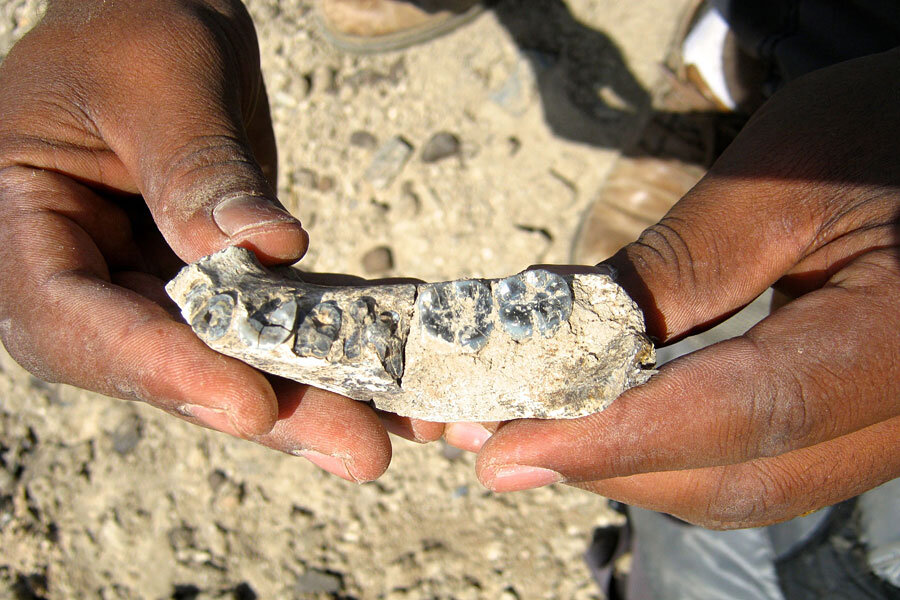With an ancient jawbone, scientists zero in on humanity's origins
Loading...
Little is known about our ancestors between 2 and 3 million years ago. The fossil record from that period is scarce, and the little that exists is poorly preserved and incomplete.
So it may come as a surprise that when a game-changing specimen from that era was found, it wasn't dug from deep beneath the earth, but was spotted sitting atop a hill in Ethiopia.
Discovered by a anthropology graduate student working in Ethiopia’s fossil-rich Afar region in 2013, the fossil – a partial mandible dubbed LD 350-1 – is thought to belong to an early member of the Homo genus, of which H. sapiens is the only surviving species. After analyzing the specimen and site, it was dated at about 2.8 million years – around 400,000 years older than the oldest-known Homo specimen. Two articles published today in the journal Science describe the breakthrough.
As paleoanthropologists pursue more fossil evidence in hopes of fully identifying the creature, they hope to zero in on an evolutionary turning point.
"What is special about this jaw is not just the date," said Brian Villmoare, the lead author of one of the papers, in a teleconference, "but that it has a unique combination of traits that make it truly transitional between Australopithecus and Homo."
Dr. Villmoare, of the University of Nevada, led a team of researchers dedicated to analyzing the morphology of LD 350-1. They found that, while the jawbone was about the same size as that of a more primitive Australopithecus afarensis, the wear and shape of the molars were typical of Homo. As such, the creature could represent – or at least lead to – a critical point in human evolution.
“[This is] a very early representative of the lineage that led exclusively to later human species,” co-author William Kimbel said.
A separate team, led by Penn State researcher Erin DiMaggio, focused on the geological properties of the Afar region. By dating the crystalline sediment found alongside LD 350-1, Dr. DiMaggio determined the approximate age of the fossil. What’s more, her team’s sedimentary analysis painted a picture of what the Ethiopian landscape might have looked like 2.8 million years ago.
According to DiMaggio, the Afar region at that time was a grassland resembling the Serengeti. Wide-open and virtually devoid of tree canopies, it would have been a harsh environment for a lineage that had only recently adapted bipedalism. A. afarensis fossils dated at 2.9 million years and earlier are also found in Afar – some scientists argue that open terrain and climate change could have imposed evolutionary divergence, as Australopithecus died out and Homo survived.
"All we know is that this early Homo could live in this extreme habitat," co-author Kaye Reed said, "and apparently, 'Lucy' could not."
This new specimen bears a cursory resemblance to Homo habilis – notably, the OH 7 fossil described in a different study today. But Villmoare and company are careful not to jump to conclusions – more fossil evidence will be essential to properly identifying LD 350-1. But by telling them where to look, this mystery jaw could lead science to the origins of Homo.
"It's the first fossil we have on the branch that leads toward us," Villmoare said.






